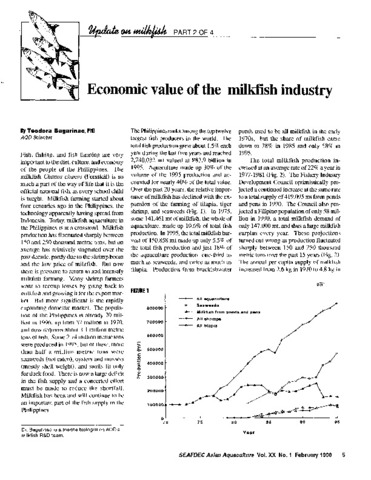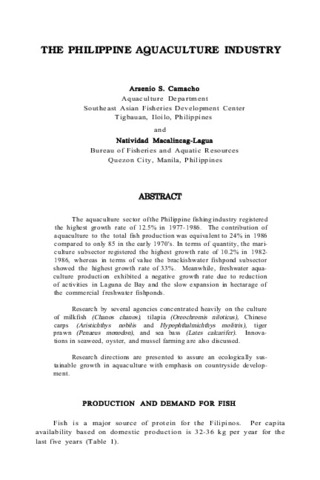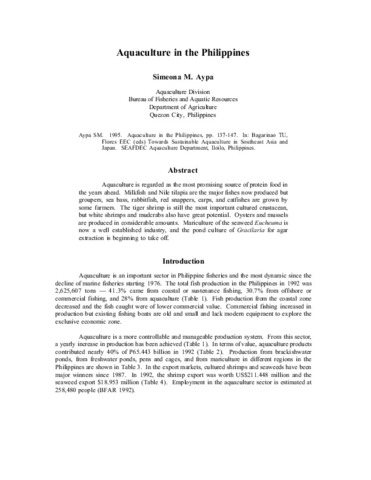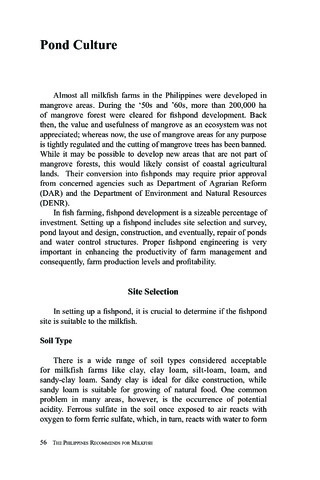Economic value of the milkfish industry
Share
Abstract
A brief description is given of the milkfish (Chanos chanos) farming industry in the Philippines. Over the past 20 years, the relative importance of milkfish has declined with the expansion of tilapia, tiger shrimp and seaweed farming. In 1975, some 141,461 mt of milkfish made up 10% of the total fish production, whereas in 1995, the total milkfish harvest of 150,858 mt made up only 5.5% of the total fish production. Milkfish are harvested and marketed mostly fresh or chilled, whole or deboned, but some are canned or smoked. The domestic markets, mainly in Metro Manila, absorb most of the production. Milkfish is also absorbed in different product forms: dried, canned, smoked, or marinated. An export market for quick-frozen deboned milkfish fillets has begun to develop and fish processing companies are responding fast. The milkfish farming industry has important linkages with the various sectors that supply the inputs, and those that transport, store, market or process the harvest. For intensive milkfish farming to be both profitable and sustainable, more value-added products must be developed and marketed.
Suggested Citation
Bagarinao, T. (1998). Economic value of the milkfish industry. SEAFDEC Asian Aquaculture , 20(1), 5-6. http://hdl.handle.net/10862/1781
Subject
Taxonomic term
Collections
Related items
Showing items related by title, author, creator and subject.
-
The Philippine aquaculture industry
Camacho, Arsenio S.; Macalincag-Lagua, Natividad (Aquaculture Department, Southeast Asian Fisheries Development Center, 1988)The aquaculture sector of the Philippine fishing industry registered the highest growth rate of 12.5% in 1977-1986. The contribution of aquaculture to the total fish production was equivalent to 24% in 1986 compared to ... -
Aquaculture in the Philippines
Aypa, Simeona M. (Aquaculture Department, Southeast Asian Fisheries Development Center, 1995)Aquaculture is regarded as the most promising source of protein food in the years ahead. Milkfish and Nile tilapia are the major fishes now produced but groupers, sea bass, rabbitfish, red snappers, carps, and catfishes ... -
[The Philippines recommends for milkfish:] Pond culture
Corre Jr., Valeriano L.; Saclauso, Crispino A.; Garcia, Yolanda T.; Salayo, Nerissa D.; The Milkfish Technical Committee 2016 (DOST-PCAARRD, 2016)






